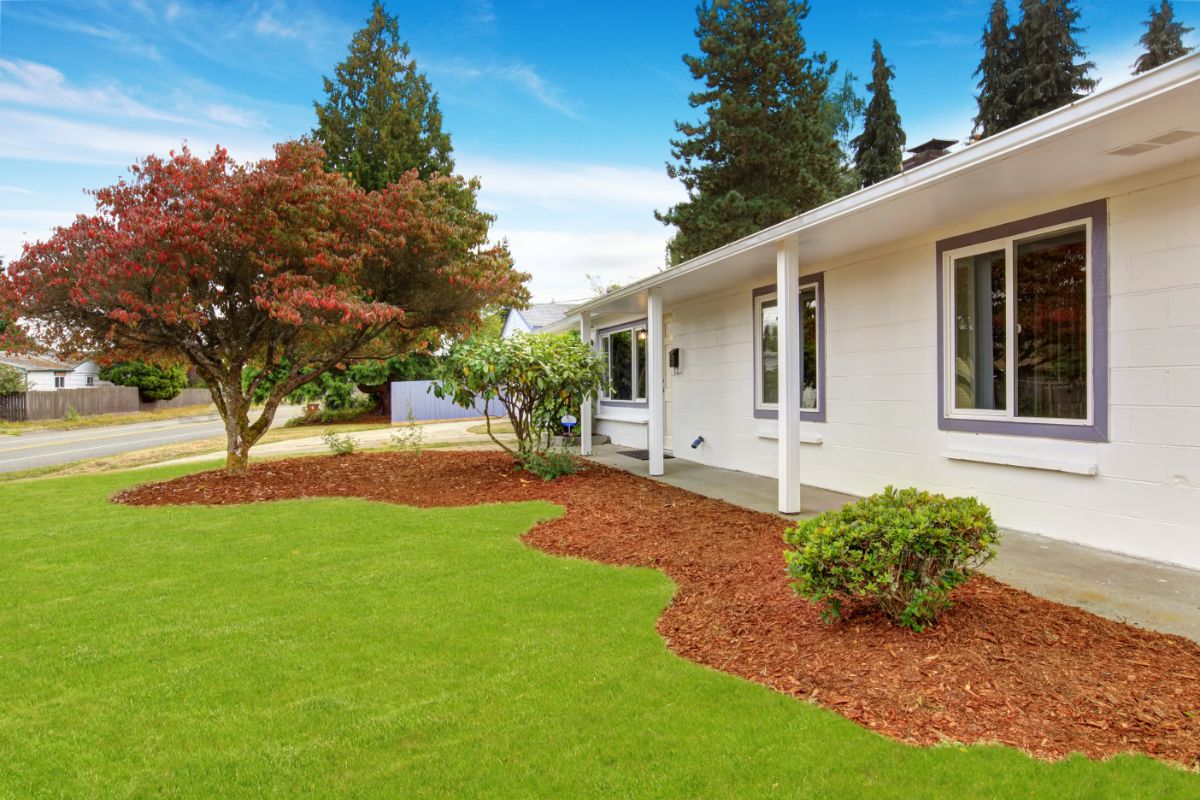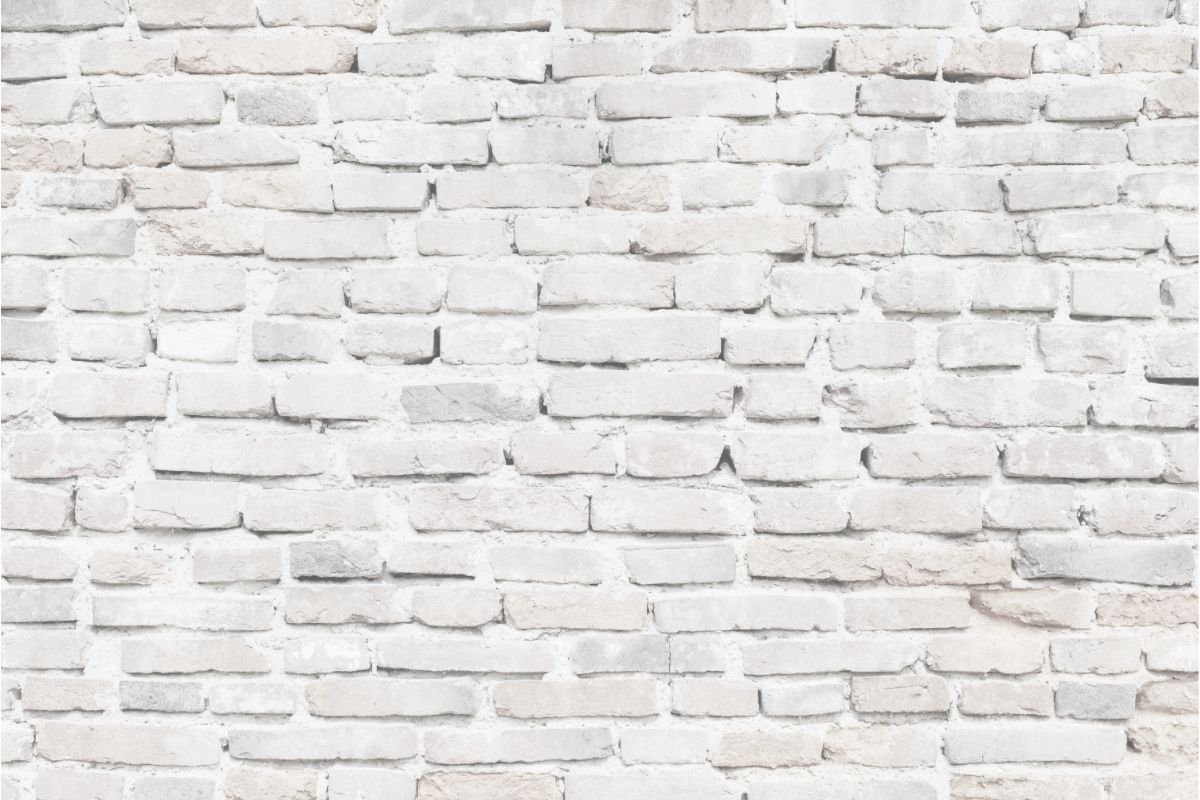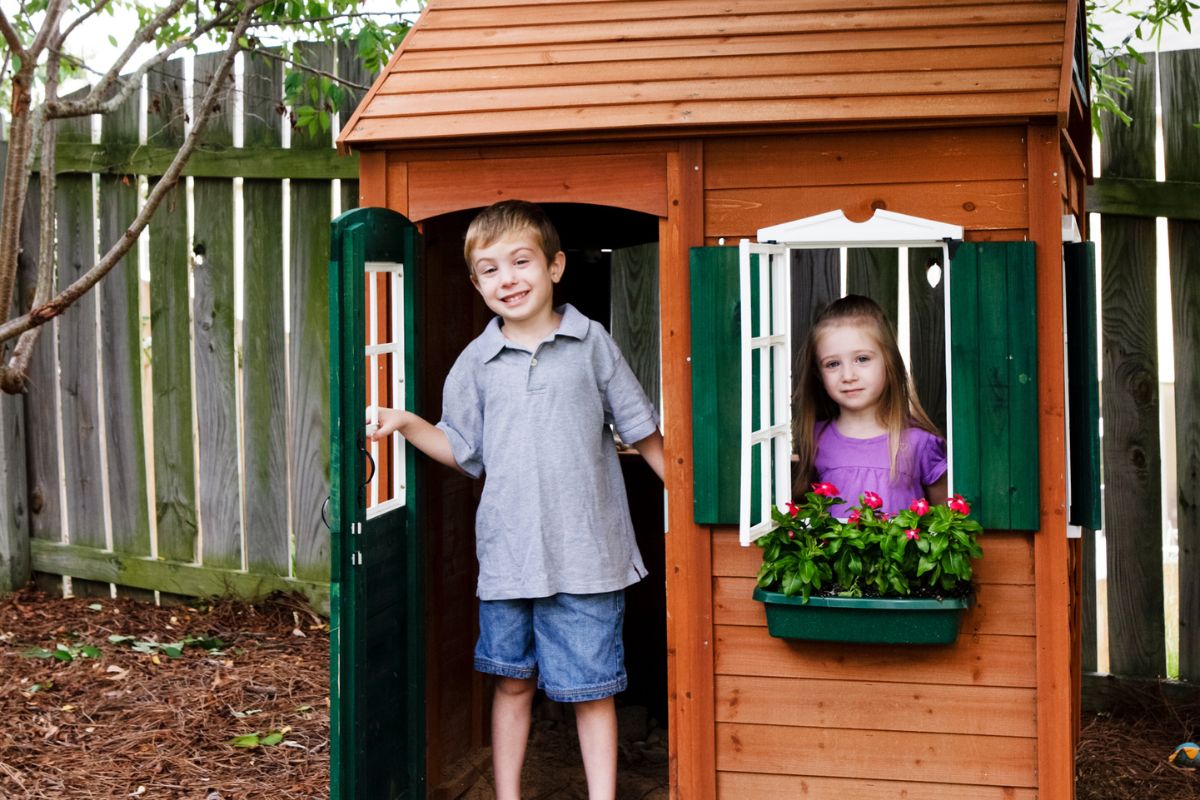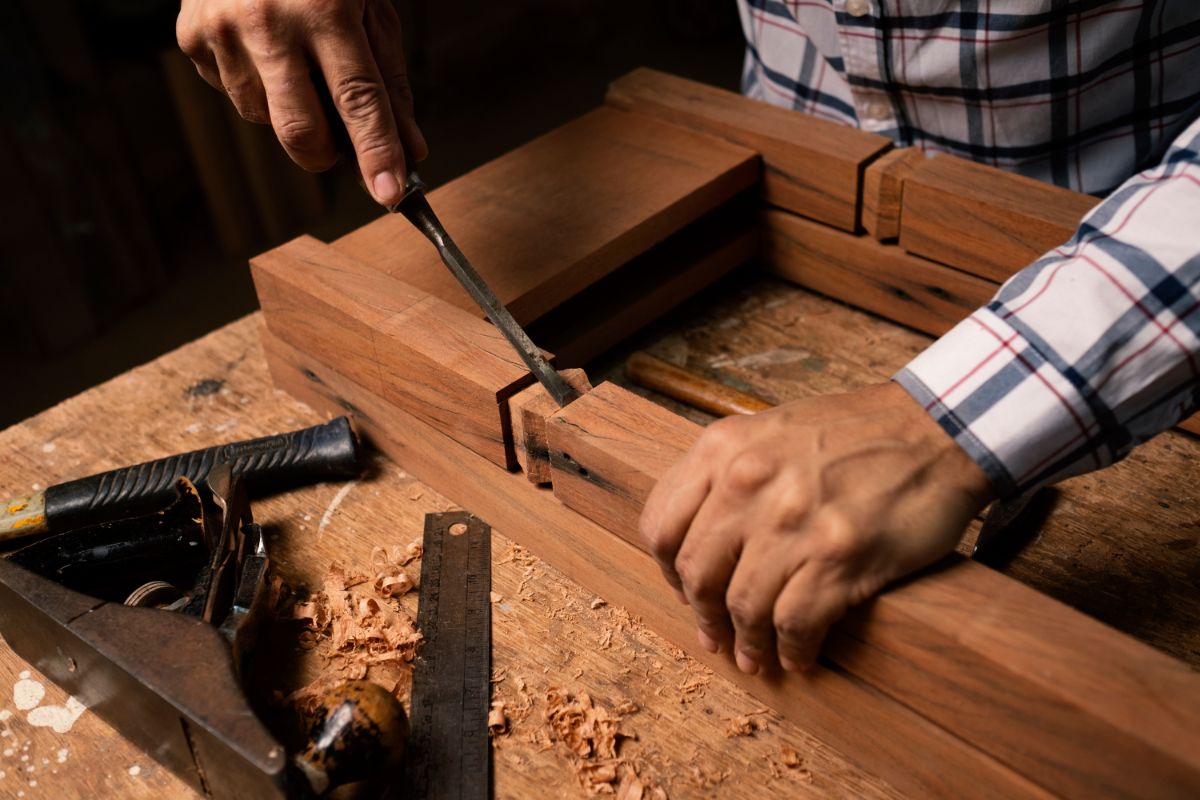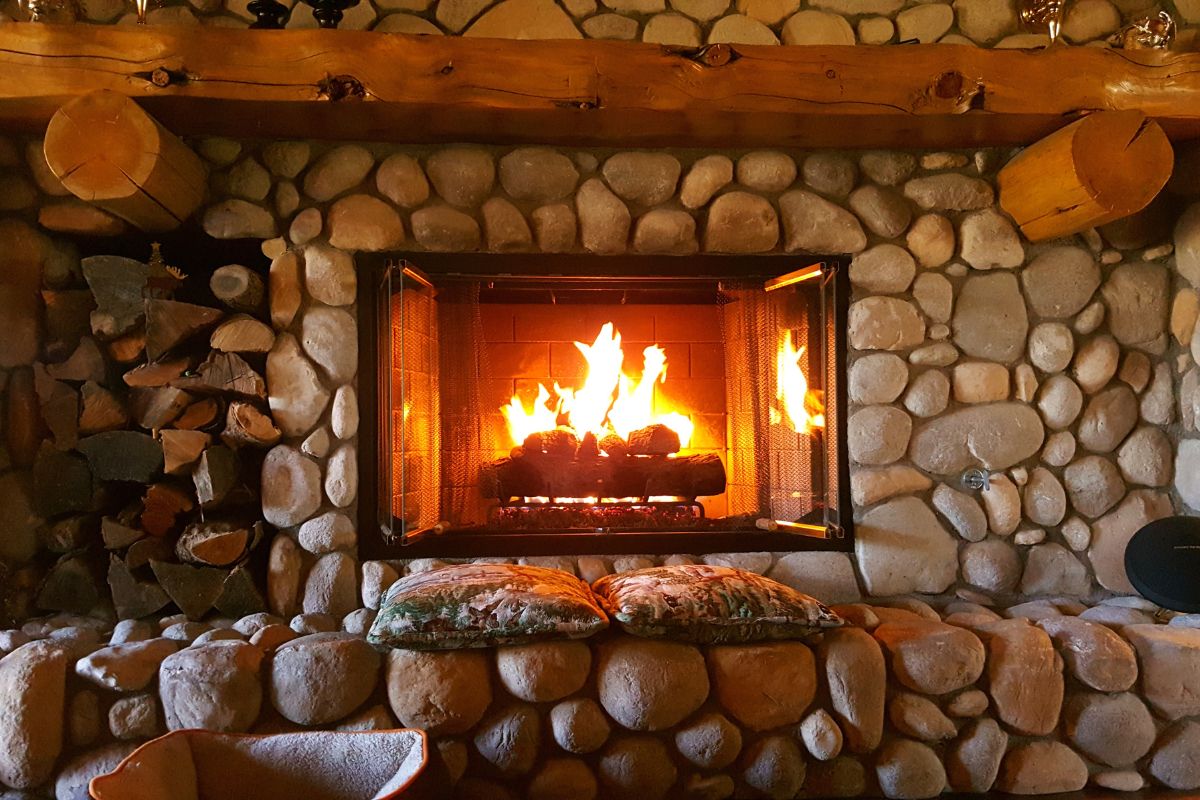Landscaping is a great way to add beauty and value to your home or property. If you want to improve the look of your yard, consider adding a garden bed or a berm.
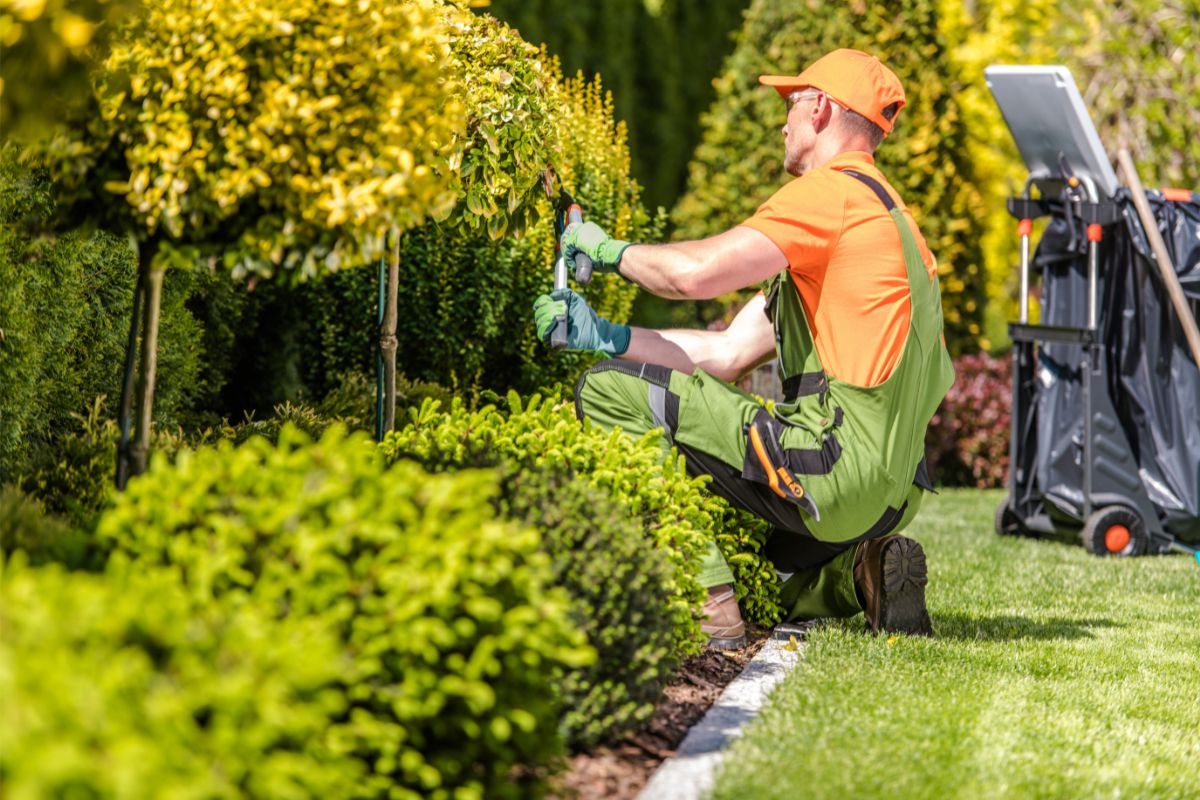
These landscaping projects are relatively inexpensive and they require minimal effort.
Landscape berms are also known as retaining walls because they help prevent soil erosion and retain moisture. They are often built from stone, brick, wood, or other materials – and can also be made from a variety of plants.
In addition to their aesthetic appeal, these structures provide benefits such as protecting against flooding, preventing soil erosion, and providing privacy.
To help you bring your own landscape berm to life, we have put together all you need to know; follow our simple guide to learning all you need to know to create your own landscape berm and add a new element of interest to your garden.
What Is A Landscape Berm?
A landscape berm is an artificial structure that helps protect your lawn and garden by creating a barrier between it and the surrounding area. It’s usually used to keep water away from your house or garden, but it can also be used for decorative purposes.
Landscape berms come in many different shapes and sizes, depending on what material you choose to use. The most common types include:
Stone
Stone is a very popular material for a berm, as it looks beautiful and adds character to any outdoor space. You can find stones at local building supply stores, or you can order custom-made stones online.
Brick
Brick is another option for a berm, especially if you’re looking for something more traditional. Brick is available in various colors and styles, so you can easily match them with your existing decor.
Wood
If you prefer a natural look, wood is one of the best options for a berm. Wood is easy to work with and requires little maintenance.
Plants
If you’d like to make your landscape berm more interesting, try planting some plants along its edge. There are plenty of varieties of plants that will grow well in a berm, including grasses, shrubs, trees, flowers, and even vegetables!
You can build a landscape berm with any of these materials, although some may be more suitable than others. For example, concrete is very durable, so it will last longer than other materials.
However, if you’re not sure which type of berm would work best for you, then try out several options
How To Build Your Own Landscape Berm
The first step in designing your landscape berm is choosing the right type of material. Stone, brick, and wood are three of the most commonly used materials for this project.
Each has its pros and cons, so it’s important to do research before making your decision. Another very popular option is to use plants, and this helps to create a unique design.
Once you’ve decided on the type of berm you want, you’ll need to decide where you want to place it. This could be anywhere in your yard, but there are certain areas that are better suited for this kind of project.
For example, if you live near a lake or river, you might want to build a berm around your backyard pool.
When deciding on the best location for your berm, there are a number of considerations to bear in mind, and these include:
Water Drainage
If you plan on using your berm to prevent water damage to your home or garden, then you’ll need to ensure that it drains properly. Make sure that the ground underneath the berm slopes away from the house or garden, and that it doesn’t collect rainwater.
Drainage should be considered when deciding on the size of the berm too. If you’re planning on installing a large berm, then you’ll need enough room to allow excess water to drain away.
Accessibility
Another thing to consider when selecting a location for your berm is accessibility. If you have limited mobility, then you’ll probably want to avoid placing your berm near stairs or walkways. Also, don’t put it next to a driveway or garage, as this could cause problems during heavy rains.
Safety
Finally, safety is an issue that needs to be taken into consideration when choosing a spot for your berm. The area must be safe for children and pets, and you’ll also need to keep an eye out for potential hazards such as power lines.
Top Tips For Building A Landscape Berm
Now that you know what you need to get started, here are some tips to help you complete your project successfully.
Choose A Location
Before building anything, you’ll need to choose a good spot for your berm, and this includes finding a level surface. You’ll also need to think about how much space you have available, and whether you want to install it close to your home or further away.
To make sure that everything goes smoothly, you’ll need to measure out the exact dimensions of your berm.
This means measuring the length, width, and height of the area, and marking off the boundaries.
Prepare Your Site
Before you start building your berm, you’ll first need to prepare your site. This includes clearing away any existing vegetation, such as weeds and grass, and removing any rocks or debris from the area.
Once you’ve done this, you’ll need to dig out a hole big enough for the base of your berm. The depth of the hole depends on the size of your berm, but you’ll typically need somewhere between 1 and 2 feet deep.
You’ll need to dig up the soil beneath the area you want to build your berm. This will give you access to the topsoil, which can be removed with a shovel.
Next, you’ll need to add a layer of sand or gravel around the perimeter of the hole. This helps prevent water from seeping into the ground, which can cause erosion. It also prevents roots from growing through the berm, making it easier to remove once you’re finished planting.
Add The Soil
Once you’ve prepared your site, you’ll need to fill the hole with soil. Depending on the type of plants you use, you may need to amend the soil before filling it up.
Amend the soil by adding organic matter, like compost or manure, so that it has better drainage and nutrients.
Once you’ve filled the hole with soil, you’ll need to level off the top of the soil. This ensures that there’s no unevenness on the surface, which can make it difficult to plant. To achieve this, you’ll need either a trowel or a shovel.
Now that you’ve prepared your site and leveled the soil, it’s time to begin planting!
Planting Your Landscape Berm
The next stage is to build your berm and add the plants that you wish to include. It’s important to remember that you’ll need to remove any existing vegetation before planting.
Then, create the space for your new plants to fill.
Now that you’ve got your site ready, it’s time to start planting. For starters, you’ll want to select the plants that you’d like to grow in your landscape berm. There are many different varieties of plants available, including trees, shrubs, herbs, bulbs, and perennials.
The most important thing when choosing plants for your berm is to ensure that they thrive in the conditions you expect to find in your garden. If you live in an arctic region, then you’ll probably want to avoid plants that require warmer temperatures.
Likewise, if you live in a hot environment, you’ll want to look for plants that tolerate cooler weather.
When selecting plants for your berm, you should also consider how much sunlight they get. Some plants will do fine in full sun, while others prefer partial shade.
You’ll also want to take into account what kind of soil they prefer. Some plants love acidic soils, while others prefer alkaline ones.
After you’ve chosen your plants, you’ll need to decide where you’d like to place them in your landscape berm design.
You could put them all along the edge of the berm, or you could create a border of plants around the entire circumference of the berm; this is a chance to get creative and bring your vision to life.
In some cases, you may prefer to use wood chips as opposed to soil – this can be a good idea if the soil in your garden is particularly poor. Wood chips provide more nutrients than soil does, and they help keep the soil moist.
However, you’ll still need to amend the soil around the plants to improve its quality.
Mulch And Finish
After planting, you need to take steps to ensure that your new landscaping thrives, and finish off the berm.
This can be done by adding mulch, grass seed, or other types of plants, and you may even want to use decorative stones or rocks to finish off the look, or to add a border or edge to the berm.
Once your plants are in place, you can now begin to mulch them. Mulching is a great way to protect your plants from harsh weather conditions, and it also provides additional nutrients to the soil.
When mulching, you’ll want to choose a material that’s appropriate for the climate you live in. For example, if you live in an arid region, you might want to use straw instead of leaves.
You’ll also want to add fertilizer to your plants once they’re established. Fertilizer helps plants produce healthy foliage, flowers, and fruit. It also improves the overall health of the soil.
You’ll want to fertilize your plants every few weeks throughout the growing season to keep them healthy and ensure that they thrive and reach their full potential.
Maintain Your Landscape Berm
Maintaining your berm isn’t difficult, and all you need to do is check the soil every few weeks to see if it needs more fertilizer. In addition, you’ll need to trim back any dead foliage and clean up any debris that collects around the base of the berm.
Once your landscape has been planted, you will need to start watering it regularly. This will encourage healthy growth, and help your plants survive through the winter months.
Enjoy Your New Landscape!
When you’ve finished creating your new landscape, you’ll be able to enjoy its beauty throughout the year.
How To Choose Plants For Your Landscaping Berm
As we have mentioned, adding plants to your berm is a great way to improve the appearance of your yard. However, there are many different factors to take into account
when deciding on the type of plants you should use. Here are some things to bear in mind:
Size
If you’re looking for something small and compact, then dwarf trees and shrubs might work well. These types of plants tend to grow quickly, so they won’t require too much maintenance. On the other hand, larger plants like roses and perennials can provide a long-lasting display.
Color
When choosing plants for your berm, consider their color. Some colors are better suited than others, depending on where you live. For example, reds and oranges are popular choices in areas with warm weather, while blues and greens are often preferred in cooler climates.
Texture
Another thing to keep in mind is texture. If you prefer plants with soft textures, then you could opt for ferns or mosses. Alternatively, if you’d rather go for something harder, then you could try using pebbles or gravel as part of your berm.
Soil Type
An important consideration to keep in mind when choosing your plants is the type of soil that you have in your garden – this will play a major role in determining how well your plants thrive, as well as the type of plants that will do well in your garden.
As an example, clay soils are good for growing hardy perennials, but not for tender annuals.
Climate
The climate you live in will also impact the types of plants that are best for your berm – for instance, tropical plants aren’t suitable for colder regions. You should also think about what time of year you plan to plant your berm.
Spring is usually the ideal season because it allows you to get your plants established without having to worry about frost damage.
Foliage
Finally, you’ll want to think about the amount of foliage your plants have. While some plants don’t have leaves at all, others have lots of them, and this can create a more wild, rugged effect than neatly coiffed and curated flowers.
You’ll also need to decide whether you want your plants to be evergreen or deciduous. Evergreens are usually chosen because they stay green all year round, but this means they won’t lose their leaves during the colder seasons.
Deciduous plants, on the other hand, shed their leaves each autumn.
Top Examples of Plants For Your Landscape Berms
Now that you know what to look out for when selecting plants for your berm project, here are some examples of plants that would make excellent additions to your landscaping design.
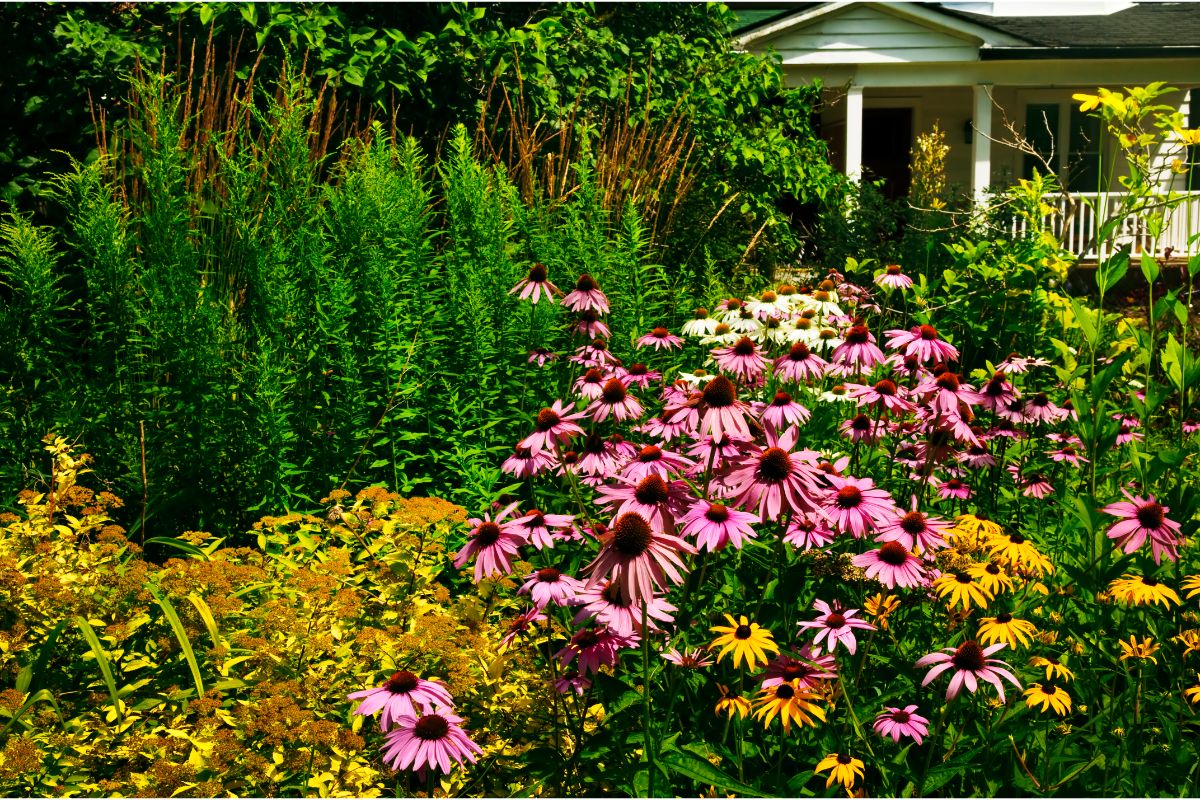
Herbs
Herbs can be a great way to fill in small gaps and fill in the edges of your berms – these have the added bonus of smelling great, and having a number of uses that can benefit your cooking, and create a tasty cup of tea!
Rosemary
This perennial herb has been used for thousands of years by people around the world. It’s native to Europe and North Africa, and it was once thought to ward off evil spirits.
Today, rosemary is still widely used for culinary purposes, and it’s becoming increasingly popular as a houseplant.
Lavender
This aromatic flower is one of the most common fragrant herbs found in gardens today. It’s native to southern France and Spain, and its scent is said to help relax the body and ease stress.
Lavender is now grown commercially throughout the United States, and it’s even available as a food additive.
Sage
Sage is another perennial herb that’s easy to grow from seed. It’s native to the Mediterranean region, and it’s long been associated with healing properties. In fact, it’s believed that sage helps improve memory and concentration.
Shrubs
Shrubs are often seen as a “boring” choice for a berm, but they’re actually quite versatile. Many shrubs can be pruned into low hedges, while others can be left unpruned to form a large tree-like shape.
They’re also very useful for creating privacy screens, and they provide shade for smaller plants.
Some of the best shrubs to include in your berm include:
Hibiscus
These beautiful flowering shrubs come in a variety of colors, including pink, white, red, purple, yellow, orange, and brown. Hibiscus are native to Mexico and Central America, and they’ve become increasingly popular over recent decades.
Crape Myrtle
The Crapemyrtles are an extremely hardy group of trees and shrubs, and they’re perfect for growing in areas where summers get hot and dry.
They’re native to Australia, New Zealand, South Africa, and Madagascar, and they’re known for their ability to withstand drought conditions, making them hardy choices for your garden.
Rose Of Sharon
Rose of Sharon is another great choice if you are looking to combine privacy screening with bright, happy, and cheerful blooms. These flowers are native to Israel, and they’re commonly used in floral arrangements.
Trees
Trees are a wonderful addition to any landscape, and they offer many benefits. Not only do they add height and structure to your yard, but they also provide shade and shelter for smaller plants.
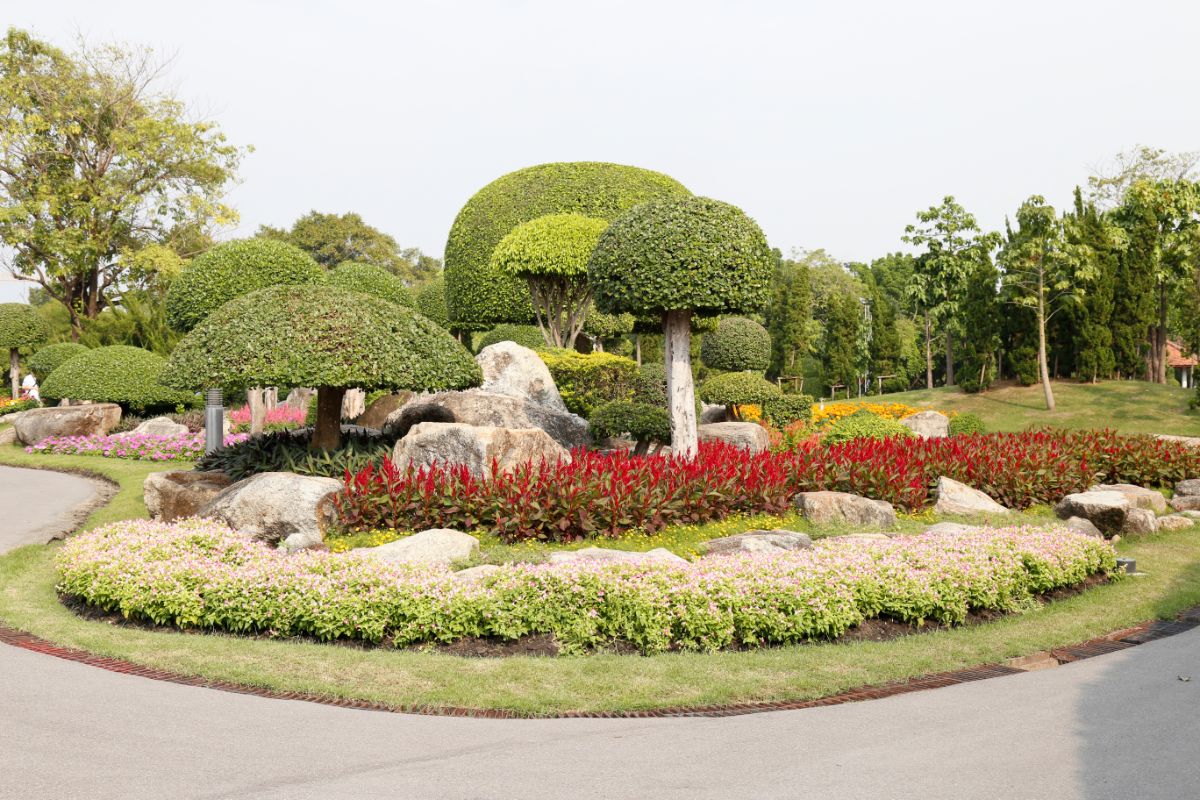
Some of the best trees to include in your berg include:
Pine
Pines are some of the easiest trees to grow, and they make excellent choices for your landscape. Pines are native to Asia, and they thrive in both cold and warm climates.
Pine trees are good at tolerating wind and snow, so they’re ideal for colder regions, and offer great coverage and privacy.
Huckleberry
Huckleberries are native to eastern North America, and they’re often called “wild hollyhocks.” They have a wide range of uses, including being used as a hedge or screen plant.
Huckleberries are deciduous, meaning they lose their leaves in winter, which makes them a great choice for colder climates.
Flowering Bulbs
Flowering bulbs are a fantastic way to bring color and life to your landscape. They’re easy to grow, and they bloom all year round. The best types of bulbs to use in your berm include:
Tulips
Tulips are native to Europe, and they’re considered by many to be the quintessential spring bulb. They’re typically planted in groups of three or more, and they’re usually planted in early spring.
Daffodils
Native to Eurasia, daffodils are one of the most famous spring bulbs. They’re available in a wide range of colors, including yellow, blue, white, and pink, and are perfect for adding a cheerful tone to your landscape berm.
Annuals
Annuals are a great option for adding color to your landscape during warmer months. They’re easy to maintain, and they don’t require much maintenance throughout the year.
Annuals are available in a wide range, from colorful annuals like petunias to low-maintenance perennials like hostas.
Evergreens
Evergreen plants are a great choice for creating a natural look in your landscape. They can help create a sense of serenity, and they’ll keep your landscape green even when it’s not summertime.
Evergreens are available in a wide variety of species, and they can be grown indoors or out.
Some great evergreens include:
Spruce
Spruces are native to northern parts of North America, and they’ve been cultivated for centuries. Spruces are very popular because they’re fast-growing, and they’re resistant to insects and disease.
Juniper
Junipers are native to Mediterranean countries, and they’re widely regarded as one of the best choices for landscaping. Junipers are slow growing, but they’re extremely long-lasting, and they tolerate a wide range of soil conditions.
Final Thoughts
Creating a landscape berm is an important part of designing your garden.
It adds height, texture, and interest to your landscape while providing a place where you can enjoy your outdoor space without having to worry about damaging your lawn, and adding privacy and a key feature to your garden that can be enjoyed all year round.
- The Woodworkers Guide to Brad Nailers: Everything You Need to Know - September 25, 2023
- How To DIY An Aztec Garden Dining Table [The Easy Way] - October 18, 2022
- Farrow & Ball Pigeon: Is It Right For Your Home? - October 17, 2022


